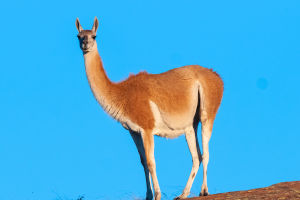Lions, often referred to as the "king of the jungle," are majestic creatures that command awe and respect. Known for their powerful build and regal appearance, these big cats have specific habitats where they thrive.
From the vast savannas of Africa to the dry forests of Asia, lions are highly adapted to their environments. Let's take a closer look at where lions live and how their habitats shape their behavior and survival.
Where Lions Live: The African Savannas
The majority of the world's lion population is found in sub-Saharan Africa. Lions prefer open landscapes like savannas, grasslands, and scrub forests, where they have the space to roam and hunt. These environments offer a mix of tall grasses and scattered trees, providing lions with plenty of opportunities to stalk prey.
The vast, open areas allow them to use their incredible speed and stealth to hunt larger animals like zebras, wildebeests, and buffalo.
Savannas, in particular, are ideal because they also support the abundant prey that lions rely on for survival. The diverse ecosystem of the African savannas supports herbivores in large numbers, which in turn sustains predators like lions. These landscapes offer lions the chance to work in groups (known as prides) to hunt cooperatively, which is one of the reasons lions are often seen as social animals compared to other big cats.
Adaptation to Dry Forests: The Asiatic Lion
While most lions live in Africa, a small population of Asiatic lions (Panthera leo persica) can be found in the Gir Forest of Gujarat, India. These lions inhabit dry, deciduous forests, which are quite different from the open plains of Africa. The Gir Forest is a unique mix of grasslands, scrublands, and dense forested areas, providing a somewhat different environment compared to the African savanna.
Asiatic lions have adapted to the dense forest habitat by developing skills to navigate through thicker vegetation. The terrain here is rugged, and the lions tend to stay within the forest or open woodland areas. Despite the challenging environment, these lions are still top predators in their region, hunting animals like chital (spotted deer), sambar deer, and wild boar.
Lion Behavior in Different Habitats
Lions are highly adaptable to their surroundings, and their behavior is influenced by the specific habitat they occupy. In Africa's savannas, lions are known for their social structure, living in prides that consist of related females, their cubs, and a few males. The pride works together to hunt, protect their territory, and care for the young. This cooperation allows lions to catch larger prey than they could on their own.
In contrast, the Asiatic lions in the Gir Forest tend to form smaller prides or even live as solitary individuals due to the dense terrain. While they still work together to hunt, their cooperation is less formal than that of African lions. The availability of prey in the Gir Forest influences their hunting strategies, with Asiatic lions relying on the cover of trees and bushes to approach their prey.
Threats to Lion Habitats
Lions face numerous threats in the wild, many of which are linked to the destruction and fragmentation of their habitats. In Africa, human activities such as farming, urbanization, and poaching have encroached on lion territories, reducing their available space. This has led to human-wildlife conflict, where lions are sometimes killed in retaliation for preying on livestock or encroaching on human settlements.
In Asia, the population of Asiatic lions has faced severe challenges due to habitat loss. The Gir Forest is the only place where these lions remain, and it is under constant pressure from human development. Efforts are being made to protect this unique habitat, but threats like illegal logging, poaching, and climate change continue to pose risks to the survival of the Asiatic lion population.
Protecting the King: Lion Conservation Initiatives
Conservation programs are vital to the survival of lions, both in Africa and Asia. In Africa, wildlife reserves and national parks like the Serengeti and Kruger National Park provide safe havens where lions can live and hunt without the immediate threat of human activity. These areas are protected by local governments and international organizations working to preserve the natural habitat of the lion.
In India, the Gir Forest National Park has been the focal point of Asiatic lion conservation. Due to years of dedicated conservation efforts, the population of Asiatic lions has increased. However, the continued success of these programs relies on preserving the habitat and minimizing human-wildlife conflict.
Preserving the King: The Future of Lion Populations
Lions are magnificent creatures that have adapted to a variety of habitats, from the open grasslands of Africa to the dry forests of Asia. Their ability to thrive in diverse environments is a testament to their resilience and strength.
However, the survival of lions is increasingly threatened by habitat destruction, poaching, and conflicts with humans. Without immediate and sustained conservation efforts, these iconic big cats could face a sharp decline in numbers.
Protecting lion populations requires global awareness, stronger wildlife protection laws, and active involvement from local communities. By supporting conservation initiatives, reducing habitat destruction, and promoting coexistence between humans and wildlife, we can help ensure that future generations will continue to witness the majesty of lions in the wild.
How Can You Help?
Lions need our support, and every small action counts!
Organizations like the African Wildlife Foundation and Lion Guardians work tirelessly to protect lion habitats. Consider donating or spreading awareness about their efforts. You can also share information about lion conservation and educate others about the importance of preserving these incredible creatures.
Lykkers! What are your thoughts on lion conservation? Have you visited a wildlife reserve or seen lions in their natural habitat?


